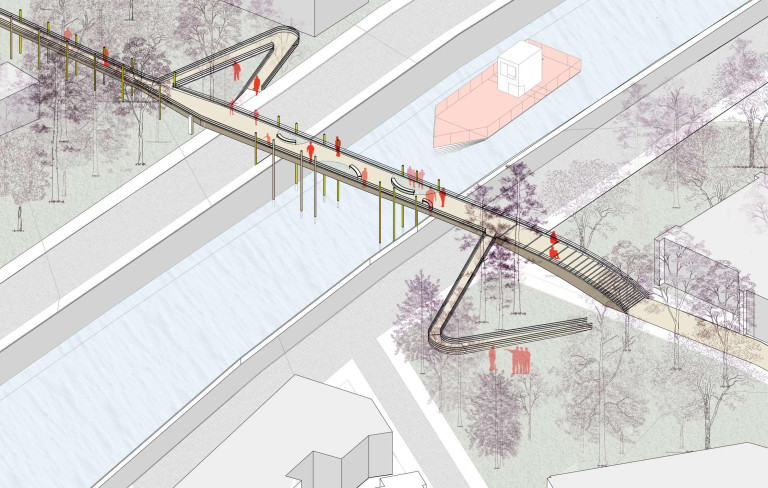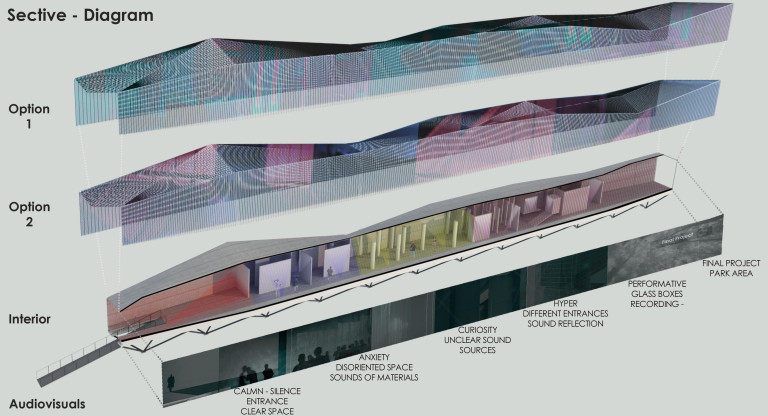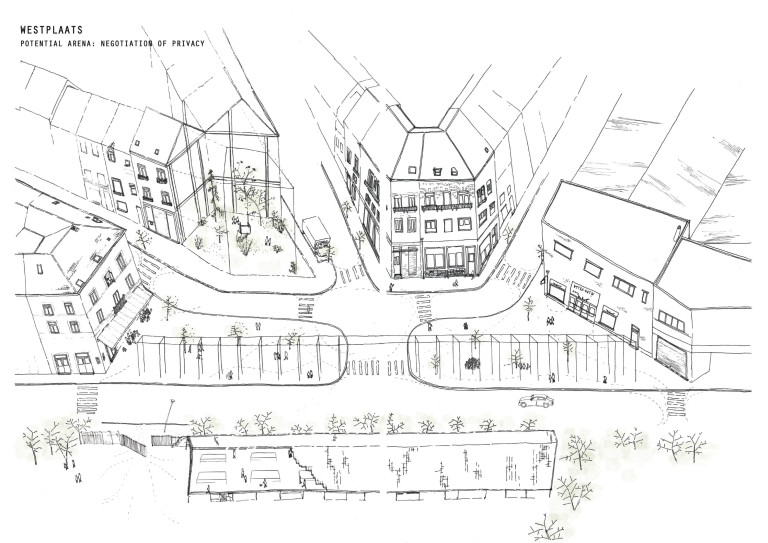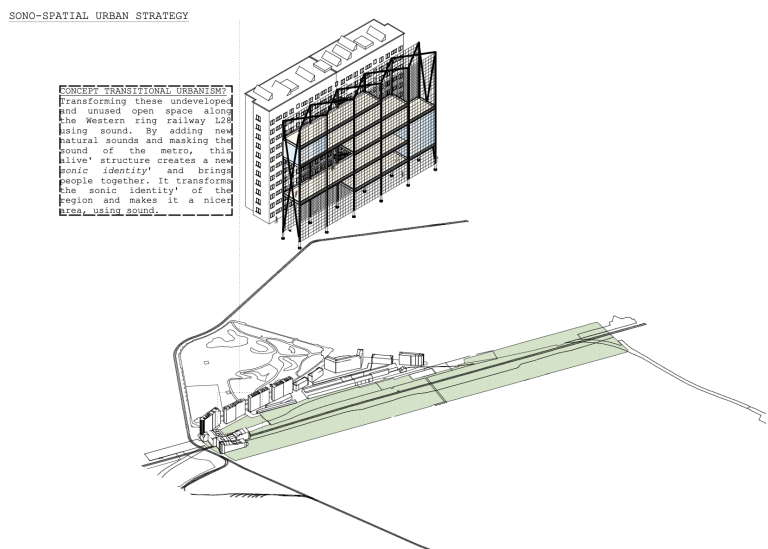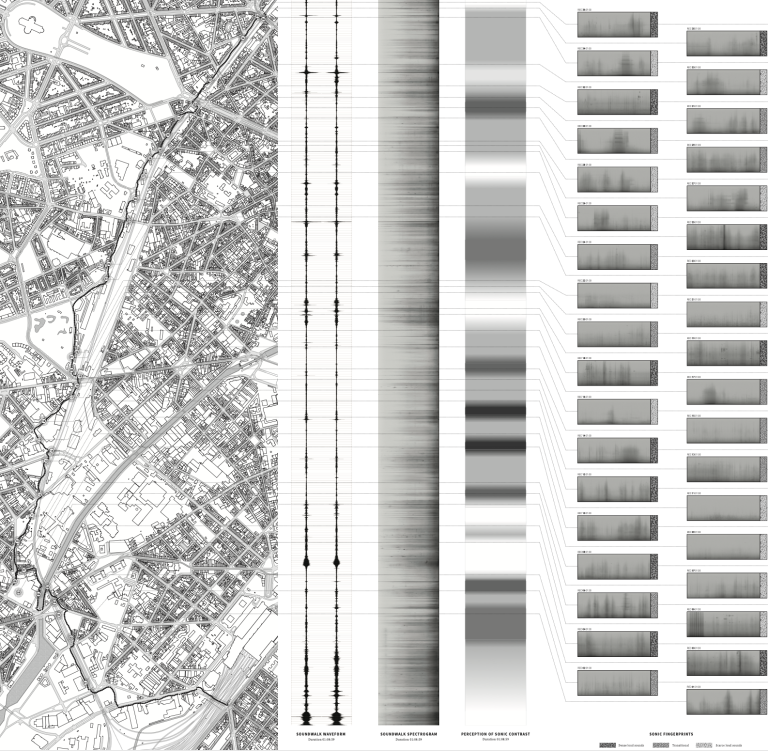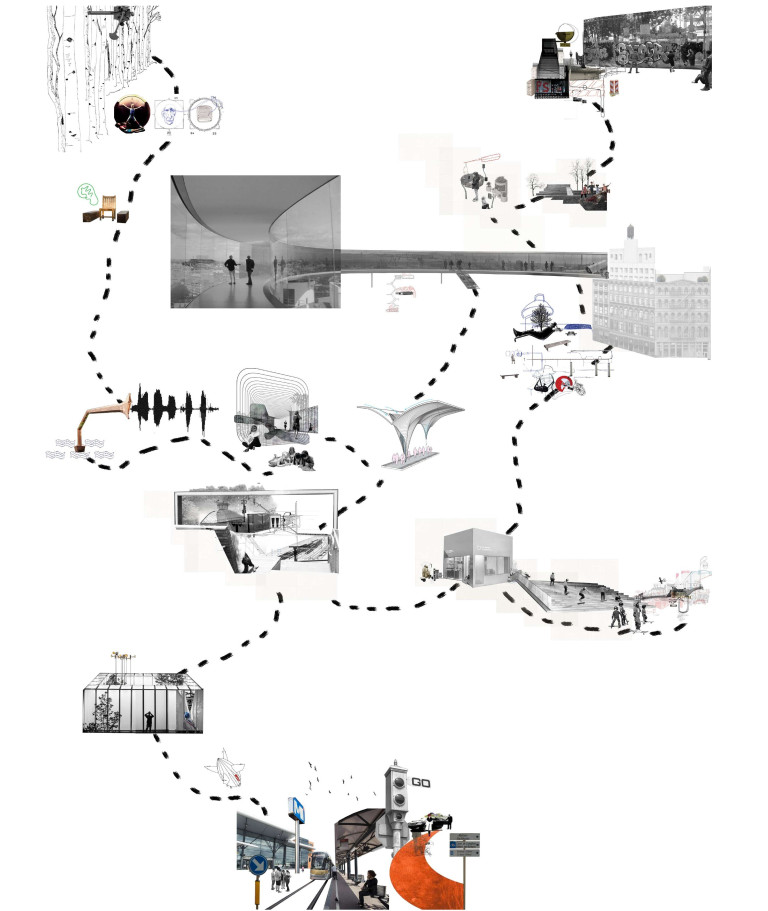Titular: Prof. Dr. Burak Pak Teachers: Prof. Dr. Burak Pak – Caroline Claus
Studio_L28 is a research project that aims to rethink the position and role of sonic vibrations in public space development on old industrial railway land with the objective of activating processes for a critical engagement with urban transition. Through this research we want to tackle two things: the quantitative sonic approach that dominates urban planning and design processes and the problem soundscape-studies have with urban sounds. On the one hand, We try to expose how in a context of urban transformation vibrational agency emerges as the effect of ad hoc configurations of human and nonhuman forces. On the other hand we try to prove that the search for sonic approaches to urban transition can be quite powerful and pedagogic in offering methods and tools that can function in planning and design processes for urban transition. The project is intended to connect to urban (sound) researchers, architectural students and sound artists working in different metropolitan contexts who are interested in sharing and investigate the potential of sonic vibrations for future public space. Through network practice the project brings together actors who are passionate about urban sound and who are striving to visualize sonic futures by testing theoretical design pathways and examining architectural-artistic routes that can turn them into reality. The studio is oriented to students summoned to perceive the multiple (sonic) vibrations in the city to exploit and contrast these vibrational forces, transforming them to into actions and opportunities; they may assume a contradictory role compared to the widespread noise control practices and they can reformulate environments, perimeters and relations of urban facts and may enter into active relations with vibrational dynamics that already exist on the territory. Students are invited to demonstrate their ability to activate sonic processes, to put in motion, to offer ideas that interpret a potentially visionary role for sonic vibrations with energetic enthusiasm for a critical sonic approach to urban transition. Studio_L28 will therefore be open training ground for sonic design experimentation joined by short design lectures and performances: the results will be presented in an exhibition organized with the addition of material over the whole studio / process. Public space transformation in the Brussels metropolitan railway area of the line L28 forms the urban backdrop of the studio.

